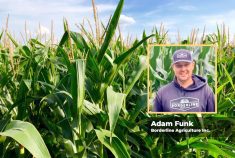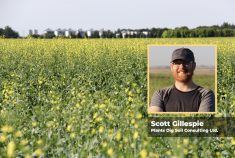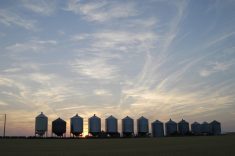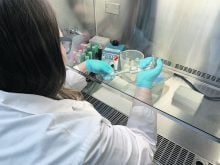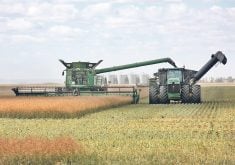Glacier FarmMedia – With new products, new production practices and new technology converging on the agriculture industry at a frenetic pace in recent years, independent agronomists and crop advisors are feeling the pressure to provide clients with recommendations sort the wheat from the proverbial chaff about what might or might not work on an individual farm.
Not only is the pace of new products and technology unrelenting, but ongoing budget cuts at all government levels have reduced or eliminated the valuable network of independent crop and livestock researchers who, for decades, provided reliable feedback on the efficacy of new technology.
And for producers the stakes are getting higher. A McKinsey & Company report indicates the cost of agricultural inputs has increased globally between 80 and 250 per cent in the last few years. It is costing farmers more to produce.
Read Also

Producer profits remain under significant pressure
Manitoba farmers are facing down a double hit of high input costs, like fertilizer, and low grain prices as they harvest their next crop.
So, when it comes to the value of great new ideas, where do producers place their input dollars in an attempt to optimize production and still realize a satisfactory return on investment?
There is no silver bullet answer to that complex question, say several independent consulting agronomists across Western Canada. Each consultant applies different strategies to evaluate new products, new practices and new technology to hopefully help producers make more informed management decisions.
In this three-part feature, we hear from three agronomists about their approaches to implementing new products and practices in the ag sector.
Read part two with Scott Gillespie and part three with Adam Funk here.
George Lubberts
Complete Agronomic Services, Nobleford, Alta.
Long time southern Alberta crop consultant George Lubberts says farmers need to ask the same questions about new products or technology as any consumer.
“I believe we need to apply the same scrutiny and due diligence whether it is the consultant, the farmer or the average consumer,” says Lubberts. “I’ve boiled it down to three Rs: we need to be looking at and asking for independent Research, local research Results and Return on investment for the grower.
“If someone comes along with a new product or service or new technology that they want me to recommend to a producer, they need to be able to show me the independent research they used to evaluate that product or service. They need to be able to show me the local research results that make that product relevant to this geographic area and my client’s farm. They also need to provide a cost benefit or show the return on investment for my client. And if they can’t do that, then maybe it is a product or technology we need to avoid.”
Lubberts says the independent research results are important because company-generated research can be biased. Local research and crop specific research results are important as well. “A new product might work well on durum wheat in central Saskatchewan, for example,” says Lubberts, “but how is it going to perform on hard red spring wheat in southern Alberta?”
And what about return on investment? “Is a 10 or 15 per cent ROI sufficient?” he asks. “A 15 per cent return might be great if you have money invested in a savings account, but with all the variables and risks of farming, if you spend $100 per acre is an extra $15 return sufficient? I remember years ago an economist saying spending on fertilizer should produce a 3:1 return you should get $3 back for every dollar spent on fertilizer.”
Lubberts also points out that not every benefit revolves around money. Does a new technology save time or improve efficiency? He points to the value of applying growth regulators to cereal crops. Regulators don’t increase yield directly, but if they reduce crop lodging, which can increase the amount of grain that goes in the bin, and reduce the stress of combining, then that’s certainly of value.
“Maybe using a new product or new technology just helps a person sleep better at night,” says Lubberts. “That can be worth a lot.”
Another option Lubberts has used to sort out questions about production practices has been to hire an independent research organization to conduct research on his behalf. In 2020, he contracted Farming Smarter to conduct research over two growing seasons to determine the best time to roll barley fields after seeding.
Fields need to be rolled to push down rocks and flatten clumps of dirt to reduce the risk of damage to forage harvester headers as crops are cut for silage. But when should fields be rolled? Soon after the crop has emerged? Or as many producers believe, wait until the fourth leaf or first node stage because later rolling helped them produce a better silage-crop stand?
“It was important to have some replicated trials to determine the best time for rolling fields,” says Lubberts. “The two-year trials showed that there were actually disadvantages to later field rolling. My advice is to roll those fields as soon as the farmer can see plants growing in the drill rows.”
The research Lubberts funded prompted Farming Smarter to secure provincial research dollars to continue this line of research on other crops for three more years. “Yes, it cost money to hire contractors to conduct research, and it’s not something I can do on every question, but I look at it as an investment that helps me provide more relevant recommendations to my clients.”





